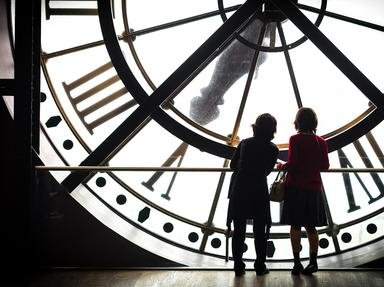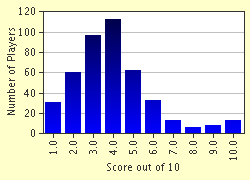Quiz Answer Key and Fun Facts
1. What civilization was the first to divide the day into 24 hours?
2. The Greek scholar Sosigenes conceived what calendar?
3. Around 690, King Ina of Kent developed this timely term.
4. Before 1000, the most sophisticated clocks were clepsydra, clocks powered by _______.
5. In which country was the oldest recorded mechanical clock built?
6. Before the introduction of the Gregorian calendar in 1582, on what date did the new year begin?
7. How many years are in an eon (aeon)?
8. In 1504, Peter Henlein of Germany built the first _______.
9. Which of these measurements of time is the shortest?
10. What was unique about the Pulsar watch, which debuted in 1971?
Source: Author
bullymom
This quiz was reviewed by FunTrivia editor
crisw before going online.
Any errors found in FunTrivia content are routinely corrected through our feedback system.


